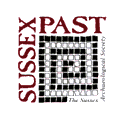Sussex Archaeological Collections: Relating to the history and antiquities of the counties of East and West Sussex
Sussex Archaeological Society, 2000. (updated 2022) https://doi.org/10.5284/1000334. How to cite using this DOI
Data copyright © Sussex Archaeological Society unless otherwise stated
This work is licensed under the ADS Terms of Use and Access.
Primary contact
Jaime
Kaminski
Sussex Archaeological Society
Barbican House
169 High Street
Lewes
BN8 1YE
Resource identifiers
- ADS Collection: 285
- DOI:https://doi.org/10.5284/1000334
- How to cite using this DOI
The courts of true love
By PETER WILKINSON
The story of Richard Tayler and Margaret Osborne has two important elements. First, it tells in vivid detail the vicissitudes of a relationship spanning the first 18 years of the 17th century. The events are mainly recounted by observers, ostensibly from the neutral stance of a court witness, yet in many instances revealing their own involvement and sympathies. The range of the subject matter is remarkable. The initial tensions between gentry and yeoman families lead into a saga: courtship, elopement, parental opposition which produces a legal battle, the imposition of an arranged marriage, a young woman's resistance and eventual desertion and, finally, a further legal battle to achieve the remarkable denouement of annulment (divorce in modern terms) and remarriage. Secondly, the medium through which the story is delivered is as significant as the events themselves. The ecclesiastical court process provides a series of witness statements aimed at establishing an impartial narrative of events, rather than a condemnatory description of crime. The court's principles are based on compromise and negotiation rather than the determination of incontrovertible guilt or innocence. But its final decisions demonstrate real power (underestimated by many modern commentators) to enforce major life changes on the litigants who opted to use the system.





